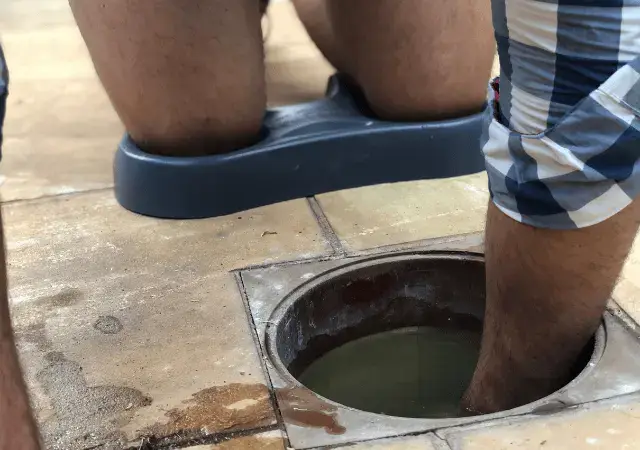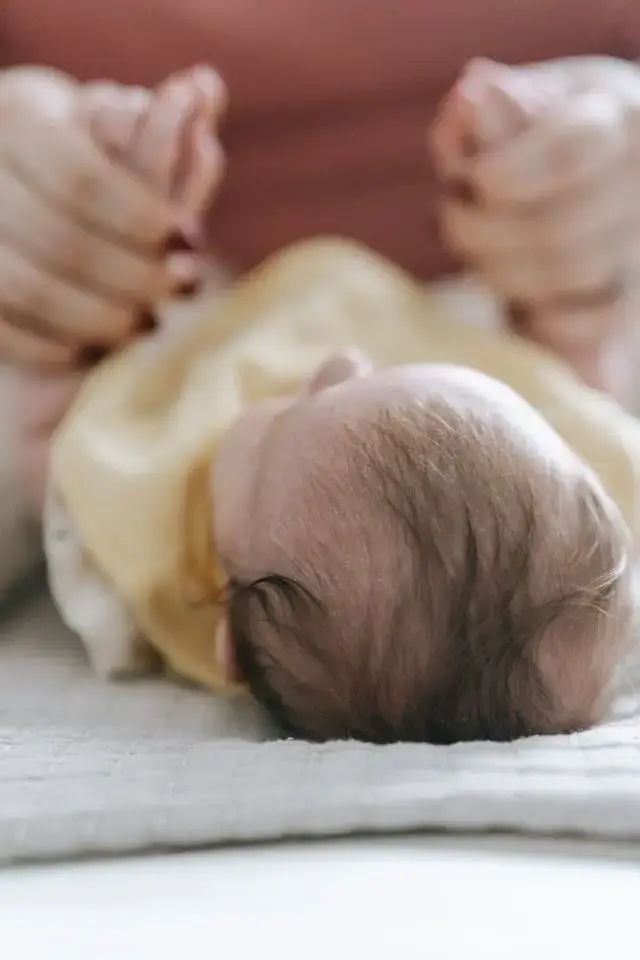Introduction: Protecting Your Knees—The Key to Staying Active and Pain-Free
Which are the best knee pads for long-term kneeling if you have an active lifestyle or a job that requires you to kneel a lot?
As someone in my 50s who enjoys a hands-on lifestyle—whether that’s tending to my garden, doing DIY home improvement projects, or tackling renovations—I\’ve learned one important lesson: Protect your knees, or they’ll come back to haunt you. Kneeling may seem harmless when you\’re in the middle of laying tile, pulling weeds, or painting baseboards, but the long-term wear and tear on your joints is something you can’t afford to ignore.
Quality knee pads designed specifically for long-term kneeling. Trust me, making this small investment can save you from a lot of pain down the line.
Section 1: Why Knee Protection Is Essential
Before diving into the different types of knee pads, let’s talk about why protecting your knees is so important, especially if you\’re over 50 and still active. Knees are incredibly vulnerable joints, and without the right protection, kneeling for extended periods can do real damage.
Statistics on Knee Injuries and Pain:
According to the CDC, 1 in 4 adults in the U.S. suffers from chronic knee pain. That’s a staggering number, and it’s not limited to older adults. Nearly half a million ER visits in the U.S. each year are the result of knee injuries, many of which stem from repetitive strain, including kneeling for long periods.
As we age, the risk of knee problems only increases. Whether it’s due to worn cartilage, decreased flexibility, or old injuries catching up, it’s no surprise that many of us find our knees to be our weak spot. If you’re someone who loves gardening, home improvement projects, or even just working on the floor, proper knee protection is a must.
The Long-Term Damage of Kneeling:
Kneeling may seem like a harmless activity, but over time, it can lead to patellofemoral pain syndrome (commonly known as \”runner’s knee\”) or even osteoarthritis. Both conditions result from the cartilage in your knee joints wearing down. Unfortunately, once cartilage is damaged, it doesn’t grow back—making prevention essential.
Section 2: Common Jobs That Require Long-Term Kneeling
Whether you’re out in the garden, cleaning the floors, or fixing something in the house, you’ve probably noticed that many of your tasks require kneeling. Let’s break down some of the most common activities that involve prolonged kneeling, and why this can be harmful to your joints.
Gardening:
If you love spending hours planting, weeding, or harvesting, you\’re likely kneeling on hard ground or a garden bed. While gardening is great for staying active, constant kneeling on uneven surfaces can put a lot of stress on your knees. Not to mention it hurts when you stand up.
Contracting and Building Work:
As a contractor, kneeling is just part of the job. Whether you’re a plumber, tiler, floor installer, or electrician, many of the tasks we handle require us to spend hours on our knees. For plumbers, installing pipes, working under sinks, and repairing leaks often means kneeling on hard surfaces for extended periods. Tilers and floor installers spend nearly all day on their knees, laying down tile, hardwood, or laminate flooring.
Electricians, especially when running wiring or installing outlets near the floor, frequently find themselves in kneeling positions. These jobs demand precision and focus, but without proper knee protection, they can wreak havoc on your joints. Investing in quality knee pads is essential to staying productive and pain-free on the job.
Mechanics:
Mechanics frequently find themselves kneeling while working on vehicles, especially during tasks that involve inspecting or repairing parts near the ground. Whether it\’s changing tires, fixing brakes, or reaching under a car to check the exhaust system, mechanics often have to kneel on hard, uncomfortable surfaces like concrete floors.
This constant kneeling puts significant strain on the knees and can lead to long-term joint pain if not properly managed. For mechanics, wearing knee pads is essential to prevent injury, provide cushioning, and make the job more comfortable and efficient, allowing them to focus on the work at hand without worrying about their knees.
The Impact on Your Back and Posture:
Kneeling doesn’t just hurt your knees—it also affects your posture and lower back. Over time, poor kneeling habits can lead to chronic back pain, spinal issues, and muscle stiffness. That’s why it’s critical to use the right equipment (like knee pads) and to focus on proper posture while working.
Section 3: Knee Pads for Long-Term Kneeling: A Must-Have for Comfort and Safety
Let’s get into the real game-changer: knee pads for long-term kneeling. These little wonders can make all the difference between a productive day in the garden or DIY project and an evening spent nursing aching joints.
Why You Need Knee Pads for Long-Term Kneeling
When you kneel, your body weight is concentrated on a small area of the knee, which creates immense pressure on the joint and surrounding cartilage. High-quality knee pads help to distribute that weight, significantly reducing the impact on your joints. This simple piece of gear can prevent injuries, reduce pain, and even improve your productivity by allowing you to kneel for longer periods without discomfort.
Types of Knee Pads for Long-Term Kneeling
The market is full of different types of knee pads, but which one is right for you? That depends on how active your job or hobby is, and what level of protection you need.
Gel Knee Pads:
- Best for: High-impact activities like construction, flooring installation, or heavy-duty gardening.
- Benefits: These pads are designed with gel cushioning to absorb shock and evenly distribute weight. Gel knee pads are a great option if you kneel frequently on hard surfaces like concrete, tile, or stone.
- Recommendation: Look for models with thick padding and adjustable straps to ensure they stay in place during long projects.
Foam Knee Pads like our beloved Kneepal:
- Best for: Light to moderate activities like gardening or DIY home projects.
- Benefits: Foam knee pads are lightweight and comfortable, providing a basic level of protection without feeling too bulky. They’re ideal if you’re working on softer surfaces or don’t need heavy-duty support.
- Recommendation: Choose foam pads with a durable outer shell for protection against rough terrain, and make sure they’re breathable for extended wear.
Hard Shell Knee Pads:
- Best for: Outdoor work or any activity involving rough, uneven surfaces.
- Benefits: These knee pads feature a hard outer shell that protects against sharp objects and uneven ground. If you\’re kneeling on rocks, gravel, or even just tough soil, hard shell pads will provide maximum protection.
- Recommendation: Ensure the knee pad has sufficient padding underneath the shell for comfort, and pick a model with wide straps for secure fit.
Knee Braces with Padding:
- Best for: Those with pre-existing knee conditions like arthritis or joint pain.
- Benefits: A knee brace with padding not only protects against further injury but also provides extra support to stabilize the knee joint during long-term kneeling.
- Recommendation: If you already have knee pain, this option combines the benefits of a knee pad with a supportive brace to reduce strain on your joints.
Section 4: The Importance of Taking Breaks
Even with the best knee pads for long-term kneeling, it\’s important not to overdo it. Kneeling for extended periods—whether you’re gardening, doing DIY, or working on a project—can still lead to stiffness and discomfort if you don\’t take regular breaks.
Why You Should Avoid Continuous Kneeling: Prolonged kneeling increases the pressure on your knee joints and can cause blood flow issues, leading to soreness and inflammation. Additionally, it impacts your posture, which can cause back pain if you aren’t careful. Experts recommend taking a break every 30 minutes to stand, stretch, and move around.
Alternatives to Kneeling:
- Use a stool or garden bench to sit when working close to the ground. This reduces pressure on your knees while still allowing you to work comfortably.
- For DIY projects, consider investing in a rolling knee creeper, which allows you to work at floor level while minimizing direct pressure on your knees.
Section 5: Avoiding Knee Problems with Proper Practices
After years of staying active and juggling multiple projects, I’ve learned a few things about avoiding knee pain. Here are some tips to help protect your joints long-term.
Start Early with Knee Protection
Don’t wait until your knees start hurting. Start using knee pads for long-term kneeling from the get-go. By taking preventive measures now, you can avoid chronic knee pain or more serious injuries down the road.
Wear Supportive Footwear
Knee health is connected to the rest of your body, and wearing supportive shoes can help reduce the strain on your knees, hips, and back while working. Invest in good footwear for all your projects—whether you\’re in the garden, garage, or workshop.
Stretch Regularly
Stretching before and after activities that involve kneeling can improve flexibility, increase blood flow, and reduce muscle stiffness. Stretching exercises for your quads, hamstrings, and lower back are particularly beneficial.
Conclusion: Invest in Your Knee Health Today
If you\’re passionate about staying active, protecting your knees should be a top priority. Quality knee pads for long-term kneeling are a simple and affordable solution that can save you from a lifetime of knee pain. Whether you’re tackling a big DIY project, spending a weekend in the garden, or working on the floor, make sure you have the right knee protection.
So, why wait? Invest in a pair of knee pads today. Your knees—and your future self—will thank you.
[/fusion_text][/fusion_builder_column][/fusion_builder_row][/fusion_builder_container]




